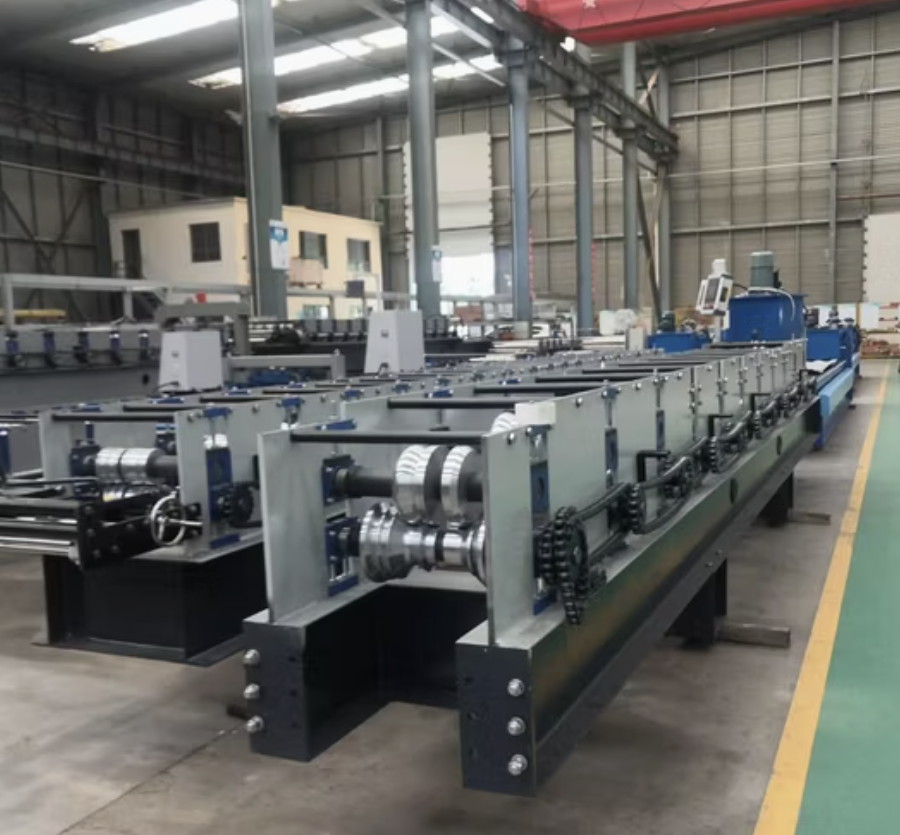To express an interest in this machine please submit the form below.

Not Sure What Machine You Need?
Select Your Profile, We'll Match It
Choose your desired profile drawing, and let Machine Matcher connect you with the best roll forming machine tailored to your needs.
Browse Profiles



Gutter Roll Forming Machine: Full Description and Specifications
A gutter roll forming machine is a specialized piece of equipment designed for manufacturing seamless gutters, which are an essential part of rainwater management systems in residential, commercial, and industrial buildings. These machines transform metal coils, such as aluminum, galvanized steel, or copper, into continuous gutter profiles through a series of rollers. The seamless design ensures better water flow, reducing the risk of leaks and enhancing the durability of gutter systems.
The gutter roll forming machine consists of multiple components that work together to shape, cut, and finish gutter profiles according to specific requirements. Typically, the machine includes an uncoiler to hold the metal coil, a feeding system, multiple roller stations for forming the gutter profile, a cutting system (often hydraulic), and a control system for adjusting settings and monitoring production.
Q1: What materials can be used with a gutter roll forming machine? A1: Gutter roll forming machines are compatible with various materials, including aluminum, galvanized steel, and copper. Each material has specific thickness requirements for optimal forming, such as 0.4–0.8mm for aluminum and 0.5–0.7mm for copper.
Q2: How does a gutter roll forming machine improve gutter durability? A2: These machines create seamless gutter profiles, which reduce the risk of leaks and improve the structural integrity of the gutter. Seamless gutters last longer than sectional types and are less prone to damage from heavy rain or debris.
Q3: Can the machine produce different gutter profiles? A3: Yes, many gutter roll forming machines are designed to produce multiple gutter profiles, such as K-style, half-round, and box gutters. The operator can adjust the rollers and settings to switch between profiles.
Q4: Is it necessary to have a hydraulic cutting system? A4: While not mandatory, a hydraulic cutting system provides high precision and durability, making it ideal for commercial and industrial use. Hydraulic cutters offer better performance for thicker materials and can handle faster production speeds.
Q5: How difficult is it to operate a gutter roll forming machine? A5: Gutter roll forming machines are generally straightforward to operate once the operator is trained. The PLC control system simplifies the process, allowing operators to set the desired length, profile type, and speed. However, initial setup and adjustments require some experience to ensure quality output.
Q6: What maintenance is required to keep the machine running smoothly? A6: Regular maintenance is essential for peak performance. Key tasks include cleaning, lubricating moving parts, inspecting rollers and blades, and checking electrical and hydraulic systems. Scheduled maintenance can prevent downtime and extend machine lifespan.
Q7: Are there safety concerns with operating a gutter roll forming machine? A7: Yes, like any industrial machinery, gutter roll forming machines have potential hazards. However, most machines include safety guards, emergency stop buttons, and other protective features. Proper training and adherence to safety protocols are crucial for safe operation.
Copyright 2025 © Machine Matcher.